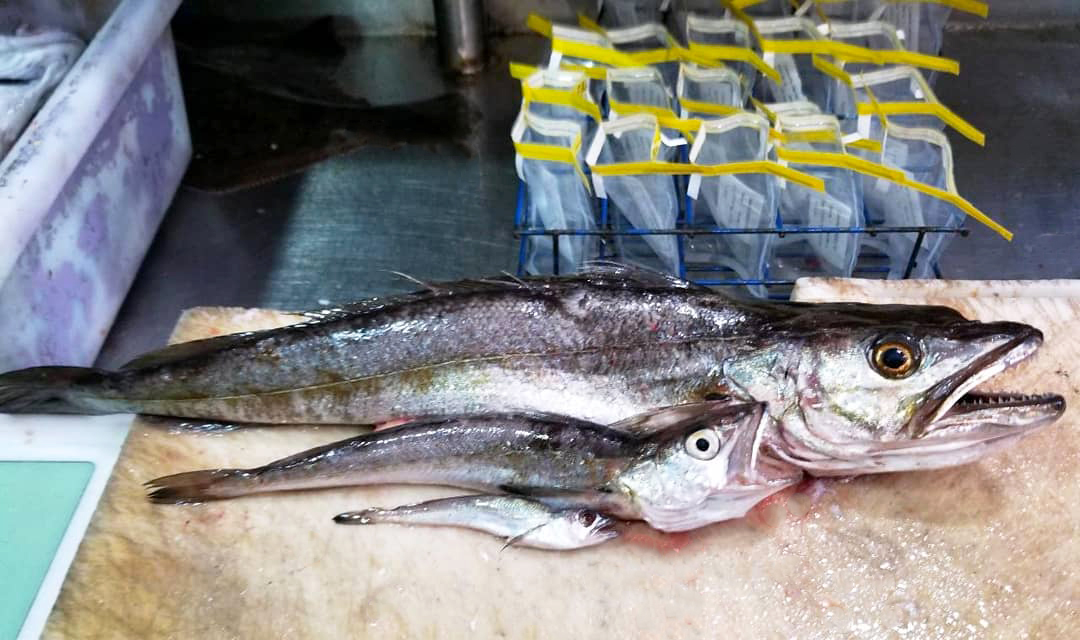- Home
- Research & Services
- Depts.
- Fisheries Science
- Research
- Multispecies Research Group
- Field Methods
- NEAMAP
- Stations
Stations
NEAMAP has two cruises a year, occurring in the spring and fall. Each cruise samples approximately 150 stations broken down into 15 regions ranging from Cape Hatteras, NC north to Cape Cod, MA.
NEAMAP samples near shore water to a depth of 60 feet and includes the sounds to 120 feet (see survey map). At each station the net is trawled along the bottom for 20 minutes, at a speed of 2.9-3.3 knots.

Work is completed during daylight hours and each cruise takes approximately 28-30 days to complete.
At each station, several standard variables are recorded. These include but are not limited to:
- Station identification parameters - date, station number, stratum, station sampling cell number.
- Tow parameters - beginning and ending tow location (as well as recordings of the continuous GPS data stream), vessel speed and direction, engine RPMs, duration of tow, water depth, tidal stage.
- Gear identification and operational parameters - net type code & net number, door type code & door numbers tow warp length, trawl door spread, wing spread, headline height & bottom contact of the footgear.
- Atmospheric and weather data - wind speed & direction, air temperature, relative humidity, barometric pressure, general weather state and sea state.
- Water Quality - water temperature, water depth, salinity, dissolved oxygen (profiles at 2m intervals), Photosynthetically active radiation.
- Invertebrate species - crabs, shrimps, hydroids, dead mans fingers, sponges, etc.
- Habitat - ghost crab pots, tires, wood, rocks, etc.

After the completion of each tow, the catch is sorted by species and modal size groups. The catch at each station is sorted by species and size class. Aggregate weights, counts and individual length measurements are recorded from all species collected. For subsampling, we have determined that 3 individuals, for very common species, and 5 individuals all others per species-size group per tow is sufficient for full processing. The data recorded from each of these subsampled specimens include length (mm), weight (kg), sex (macroscopic), maturity stage (macroscopic). In addition, eviscerated weights for calculation of condition indices are recorded for select species. Stomachs are removed, and those containing prey will be preserved onboard for subsequent examination at the shore-based laboratory. Otoliths or other appropriate ageing structures (e.g.) percales,vertebrae, etc) will be removed from each subsampled specimen for age determination. For the remainder of the sample, aggregate weights and individual lengths are recorded for each species-size class. All data are recorded electronically using an integrated database and Scantrol fish measuring boards.
Stomachs and otoliths (or other appropriate aging structure) are removed and taken back to our laboratories at VIMS for further analysis.



